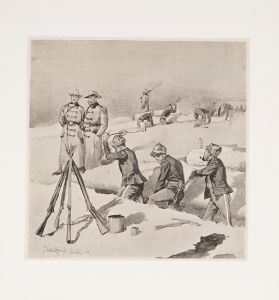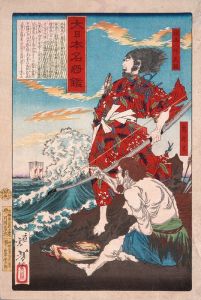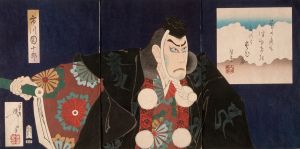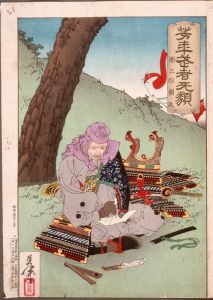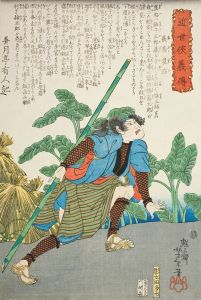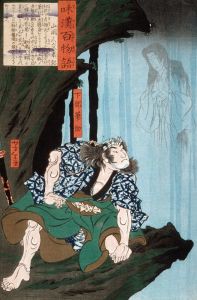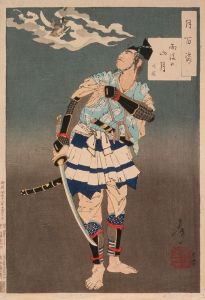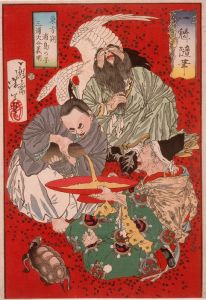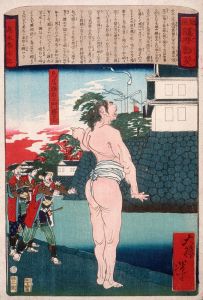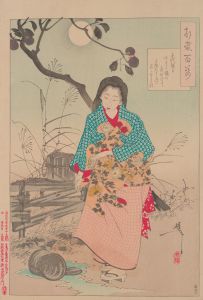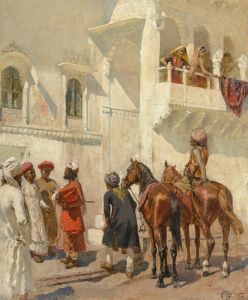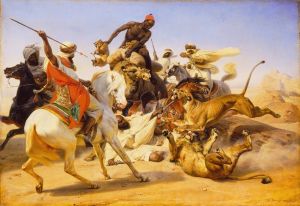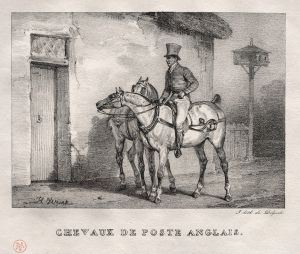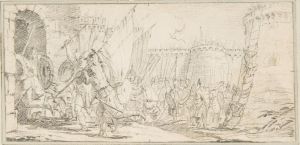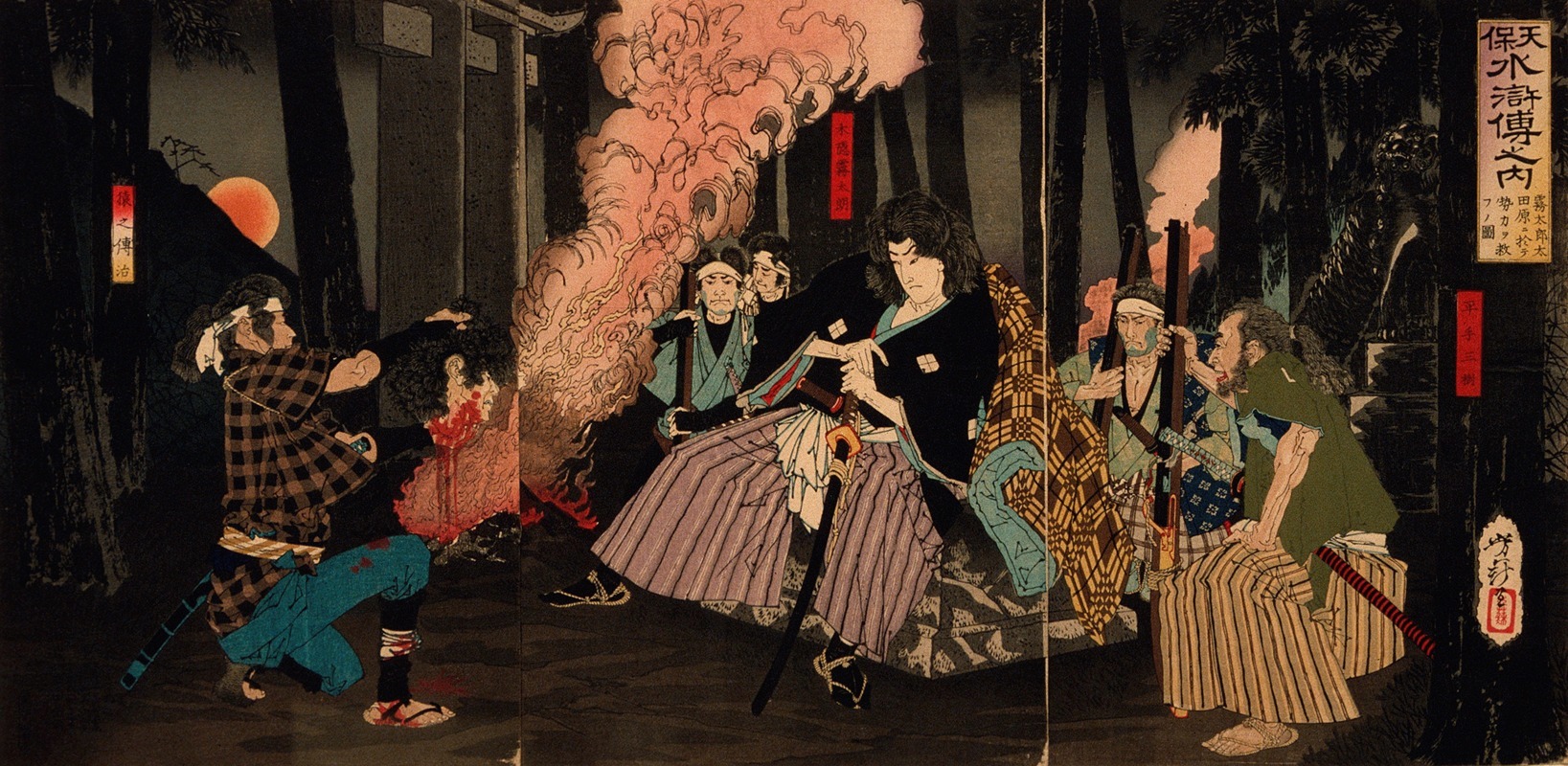
Kogakure no Kiritarō Saving Seiriki at Ōtawara
A hand-painted replica of Tsukioka Yoshitoshi’s masterpiece Kogakure no Kiritarō Saving Seiriki at Ōtawara, meticulously crafted by professional artists to capture the true essence of the original. Each piece is created with museum-quality canvas and rare mineral pigments, carefully painted by experienced artists with delicate brushstrokes and rich, layered colors to perfectly recreate the texture of the original artwork. Unlike machine-printed reproductions, this hand-painted version brings the painting to life, infused with the artist’s emotions and skill in every stroke. Whether for personal collection or home decoration, it instantly elevates the artistic atmosphere of any space.
Tsukioka Yoshitoshi was a prominent Japanese ukiyo-e artist, known for his innovative and dramatic style, particularly in the genre of woodblock prints. Born in 1839, Yoshitoshi lived through a period of significant transformation in Japan, witnessing the end of the Edo period and the beginning of the Meiji era. His works often reflect the cultural and social changes of his time, blending traditional themes with new artistic techniques.
One of Yoshitoshi's notable works is "Kogakure no Kiritarō Saving Seiriki at Ōtawara." This piece is part of his larger body of work that often depicted historical and legendary figures, capturing moments of heroism, drama, and emotion. Yoshitoshi's prints are renowned for their vivid imagery and dynamic compositions, which often convey intense action and psychological depth.
"Kogakure no Kiritarō Saving Seiriki at Ōtawara" illustrates a scene from Japanese folklore or history, though specific details about the narrative depicted in this particular print are not widely documented. In general, Yoshitoshi's works frequently drew upon stories of samurai, legendary heroes, and supernatural beings, reflecting the popular themes of bravery and adventure that were prevalent in Japanese culture.
Yoshitoshi's artistic style in this period was characterized by a bold use of color and intricate detailing, which brought his subjects to life with a sense of immediacy and drama. His ability to capture the essence of a story in a single image made his prints highly sought after, both in his time and in contemporary collections of Japanese art.
The ukiyo-e tradition, to which Yoshitoshi belonged, was a genre of art that flourished in Japan from the 17th to the 19th centuries. It typically involved woodblock printing and painting, focusing on subjects such as kabuki actors, beautiful women, landscapes, and scenes from history and folklore. Yoshitoshi was one of the last great masters of this tradition, and his work represents a bridge between the classical ukiyo-e style and the modern era of Japanese art.
Yoshitoshi's career spanned a tumultuous period in Japanese history, marked by the country's rapid modernization and the decline of the samurai class. Despite these changes, he remained committed to the ukiyo-e form, adapting his techniques and themes to reflect the evolving tastes and interests of his audience. His dedication to his craft and his ability to innovate within the traditional framework of ukiyo-e earned him a lasting legacy in the world of art.
Today, Tsukioka Yoshitoshi is celebrated as one of the most important figures in Japanese art history. His works are held in high esteem for their artistic merit and their ability to convey the complexities of human emotion and experience. "Kogakure no Kiritarō Saving Seiriki at Ōtawara," like many of his prints, continues to captivate audiences with its dynamic portrayal of heroism and its masterful execution.
In summary, while specific details about the narrative of "Kogakure no Kiritarō Saving Seiriki at Ōtawara" may not be extensively documented, the work exemplifies Yoshitoshi's skill in capturing dramatic and emotive scenes from Japanese folklore and history. His contributions to the ukiyo-e tradition and his influence on subsequent generations of artists remain significant, ensuring his place as a pivotal figure in the history of Japanese art.





